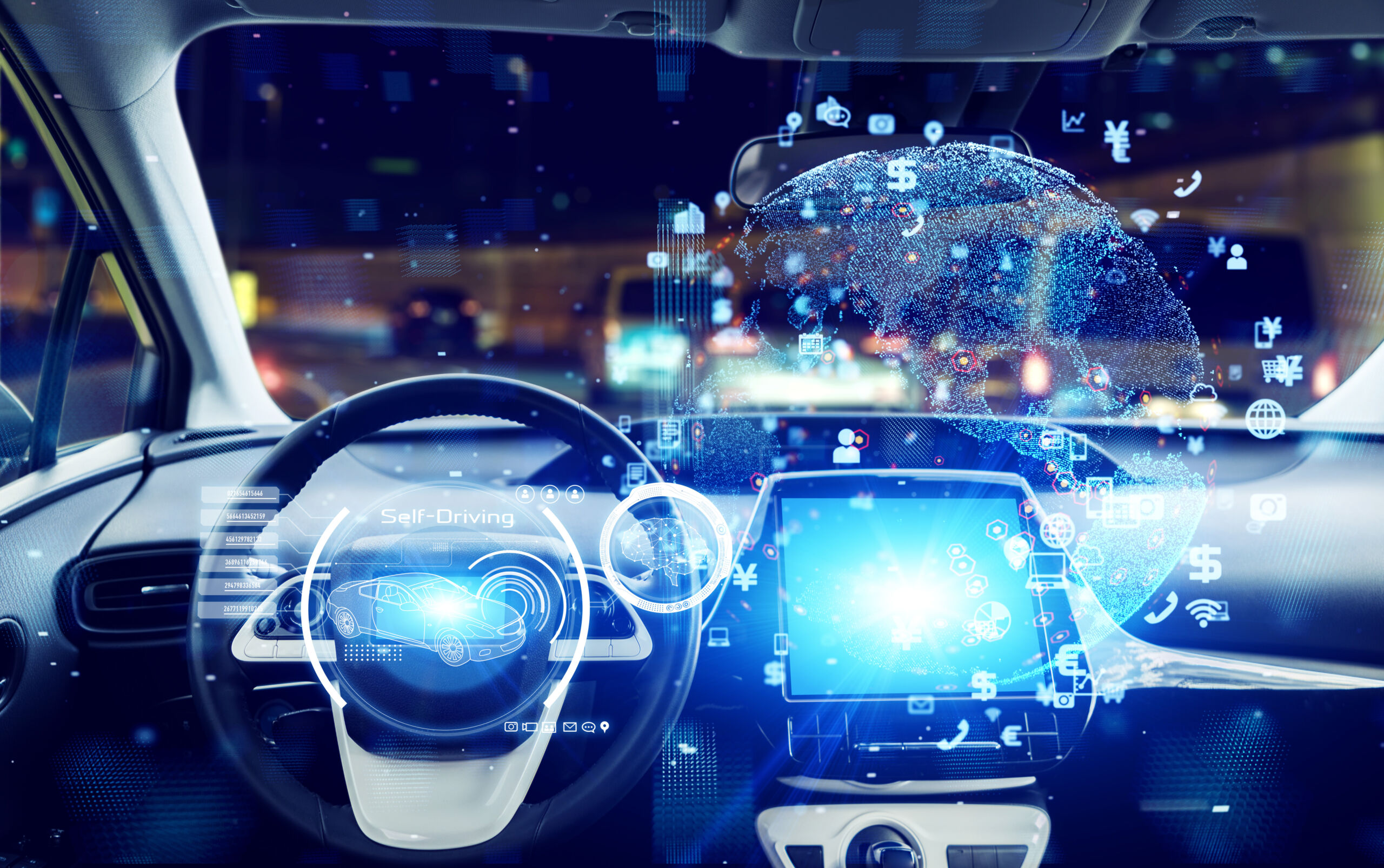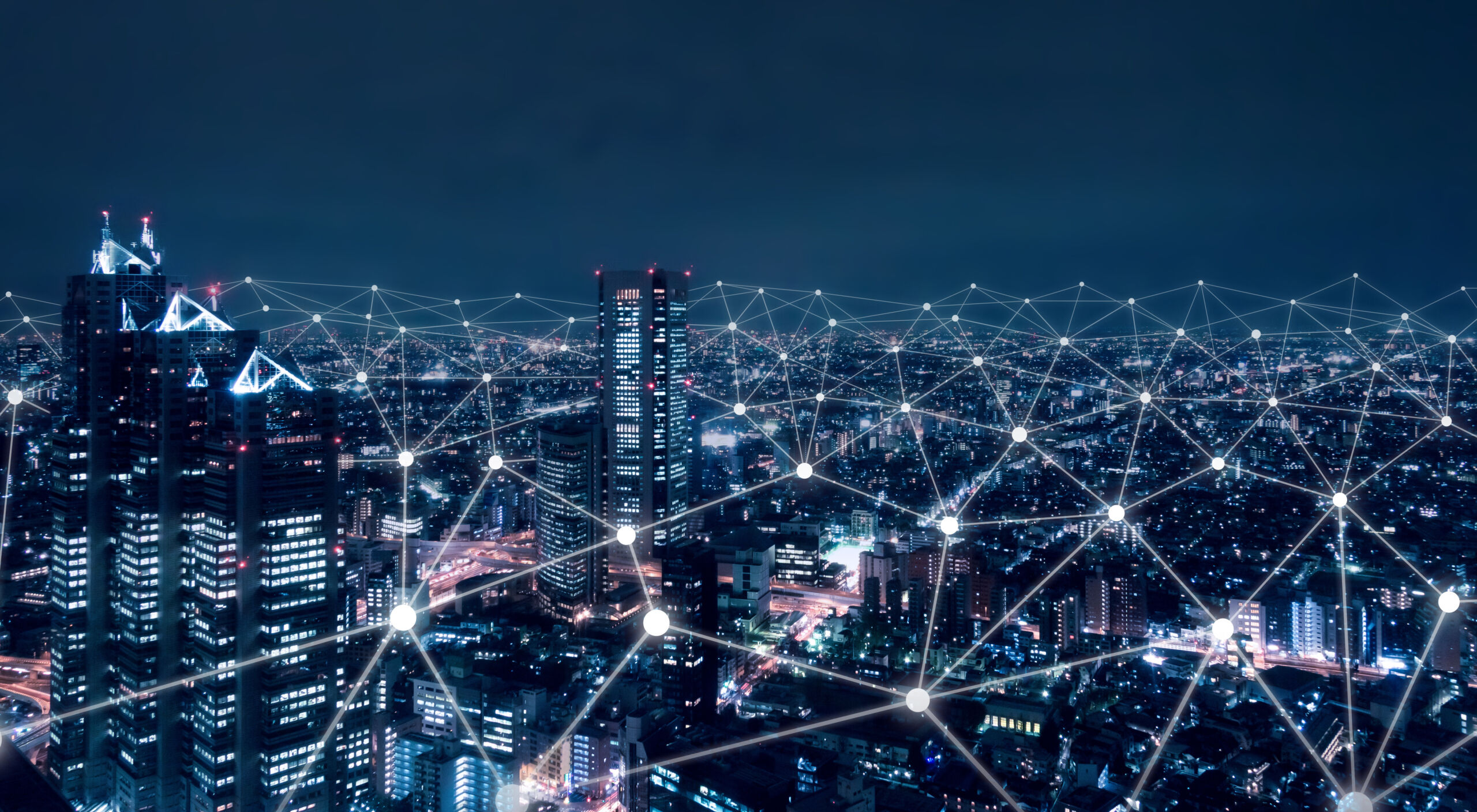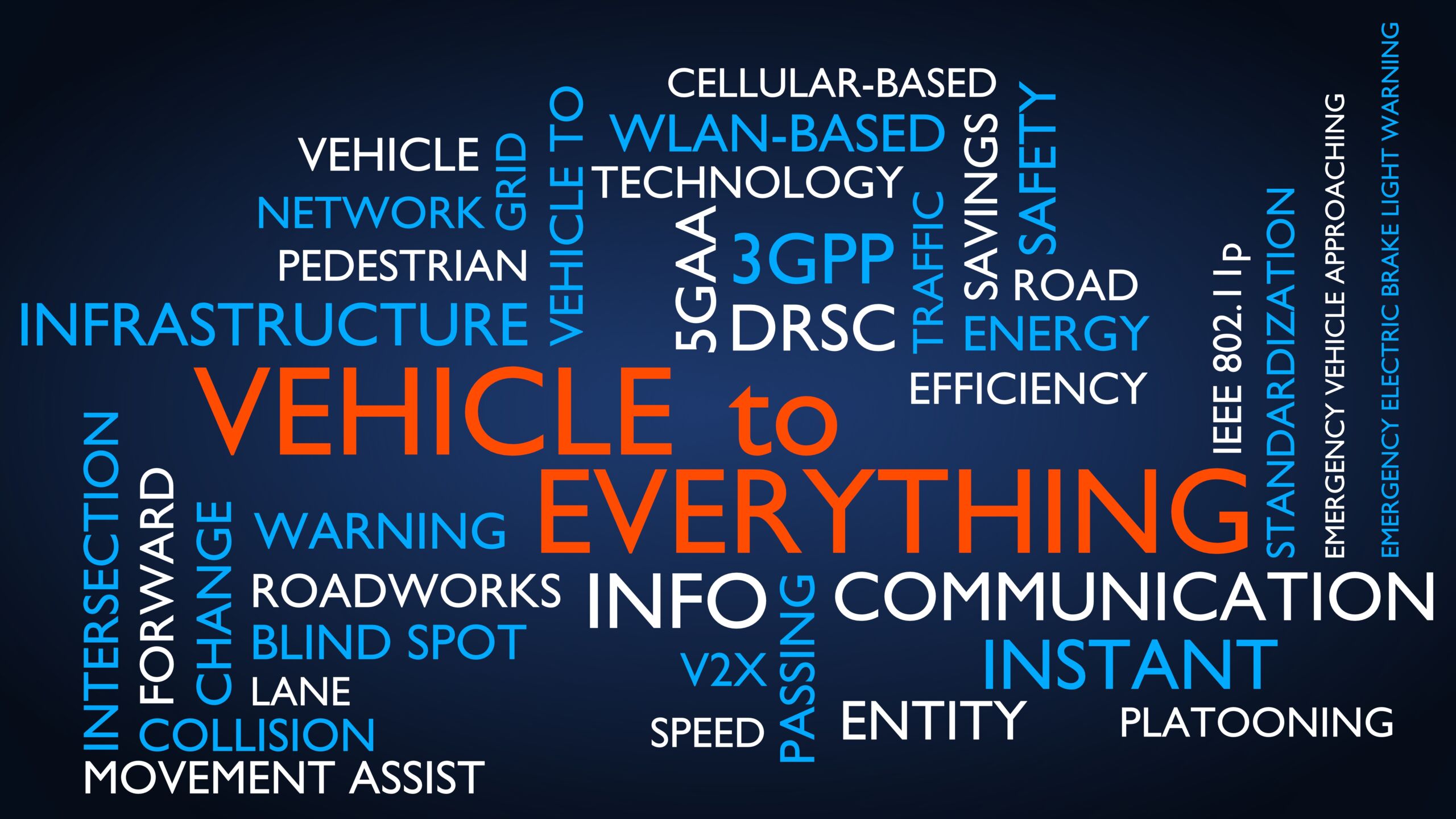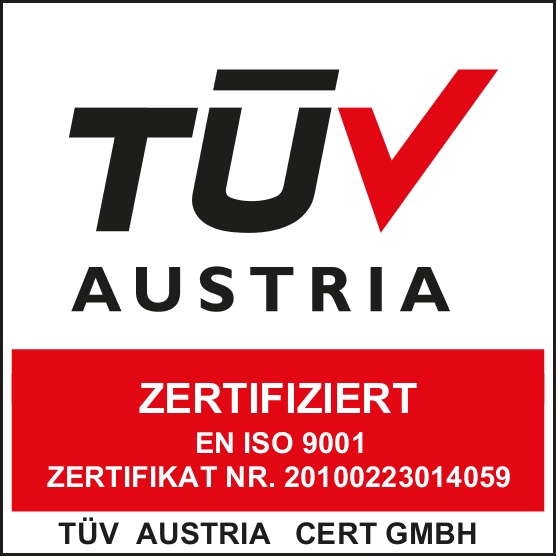C-V2X Autonomous Driving Systems
Realtime Simulation of Car to Anything Communications
Are you an automated driving systems company seeking to optimize the connectivity quality of C-V2X in various scenarios? Our simulation service is here to revolutionize your development process.
C-V2X (Cellular Vehicle-to-Everything communication) is a groundbreaking technology that enables seamless communication between vehicles, infrastructure, pedestrians, and devices. Our simulation service allows you to accurately simulate C-V2X connectivity quality in diverse scenarios, empowering you to fine-tune and enhance your systems‘ performance and safety.
With our user-friendly platform and advanced algorithms, you can create realistic simulations that mimic real-world conditions. Whether you’re optimizing vehicle-to-vehicle communication, evaluating adaptive cruise control algorithms, or exploring new possibilities, our C-V2X simulation service provides the tools and expertise you need to achieve your goals.
Join us on this exciting journey towards unlocking the full potential of C-V2X connectivity. Explore our website to learn more about our simulation service and how it can transform your automated driving systems. Experience the power of accurate and reliable simulations to elevate your products to new heights.
C-V2X Autonomous Driving Systems Use Cases
HV receives information from a backend/cloud
Automated vehicles can receive important information from a backend or cloud system to help them navigate the road ahead. This is especially important for real-time high definition (HD) map updates, which can provide the vehicle with up-to-date information about the road and any potential obstacles or hazards.
By receiving this information, the vehicle can make adjustments to its route and driving behavior, improving safety and efficiency. This information may also be used in conjunction with traffic management systems to further optimize the vehicle’s route and ensure a smooth driving experience.
Data Distribution about Objects on the Road in Form of Object Lists or Occupancy Grids
Automated vehicles rely on information from sensors installed on the road to detect objects and make driving decisions. When an automated vehicle enters an area covered by these sensors, it can subscribe to an infrastructure service that provides information about the environment. This includes updates about the location, speed, direction, and size of objects on the road such as other vehicles, pedestrians, and obstacles. This information is transmitted frequently and contains rolling IDs for each vehicle to quickly identify them on the map.
By using this data, an automated vehicle can improve its own sensors‘ accuracy and extend its viewing range. This means that the car can better understand the road ahead and make more informed driving decisions. Overall, this helps to create a smoother and safer driving experience.
Infrastructure-Based Tele-Operated Driving
Automated vehicles can experience failures in their computing or sensor components that compromise their ability to drive safely. Tele-operated driving allows for remote guidance of the vehicle to a safer location. The tele-operator uses infrastructure sensors to assess the situation and provide appropriate guidance to the vehicle, such as trajectory and maneuver instructions, to move to the nearest safe location. This can be extended to include traffic infrastructure elements, such as traffic lights and speed limit signs, to further support safe driving.
Tele-Operated Driving
Sometimes, a driver may not be able to drive safely due to a temporary health issue, such as an illness or headache. In such cases, the driver can request a remote driver to take control of the vehicle and drive it to the destination safely and efficiently. The remote driver provides instructions to the vehicle based on the surroundings and environment to navigate it safely.
Automated Parking with Tele-Operated Driving (Remote Driving Paths)
When a vehicle reaches its parking destination, the driver can leave the vehicle and a remote driver can park it from a tele-operation center.
Tele-Operated Driving Support (Remote Steering)
Autonomous vehicles may encounter complex situations where they cannot make a safe decision. In such cases, they can request remote driving support to help them navigate through the situation. The autonomous vehicle shares its video and sensor data with the remote driver, who then provides the appropriate trajectory and maneuver instructions to help the vehicle navigate the complex environment safely. Once the situation is resolved, the vehicle can switch back to autonomous driving mode without remote support.
When an autonomous vehicle’s virtual driver system disengages, it submits a report that includes a recording of vehicle system data, sensory information, and environmental conditions to OEM and government data centers. This information helps improve the vehicle’s autonomous driving capabilities in the future.
In a scenario where an autonomous vehicle encounters unexpected roadwork blocking a lane ahead, the vehicle may require human driver assistance to navigate around the obstacle and continue safely on its route. This assistance can be requested by the vehicle’s occupants or initiated automatically by the vehicle itself.
Vehicle Collects Hazard and Road Event for AV
Collecting information on road hazards and events is an important part of ensuring the safety of autonomous vehicles and other advanced driving applications. Vehicles equipped with sensors collect data on hazards and events, such as accidents or road construction, and share this information with other vehicles and servers for processing and analysis.
Automated Driving (Data sharing of dynamic objects)
In addition, vehicles collect data on dynamic objects, such as other vehicles and pedestrians, and share this information with other vehicles and servers as well. This data is processed and analyzed to provide a better understanding of the environment and potential hazards.
Automated Driving (Non-analyzed Sensor Signal Sharing)
Sometimes, vehicles may encounter obstructed views or other situations where additional sensor data is needed. In these cases, the vehicle can request non-analyzed sensor data from other vehicles or infrastructure. This data is analyzed and used to enhance the vehicle’s perception of the road and potential hazards.
By collecting and sharing this information, vehicles can work together to create a safer and more efficient driving experience for everyone.
C-V2X Application Areas
About us
The C-V2X simulation is a development of the Fraunhofer IIS (Institute for Integrated Circuits). Through a cooperation partnership with LZE GmbH, it can be made available to interested customers via a licensing model by LZE GmbH.
LZE GmbH is the interface that turns inventions into innovations. We offer companies access to new developments and products as well as all services along the market launch. At the same time, we commercialise leading edge technologies from the Fraunhofer Institutes IIS and IISB and the Friedrich-Alexander University.
You would like to talk to us?
Contact us – we look forward to your enquiry!







